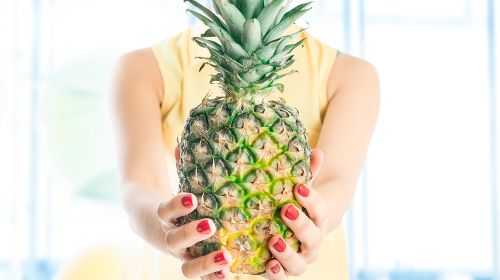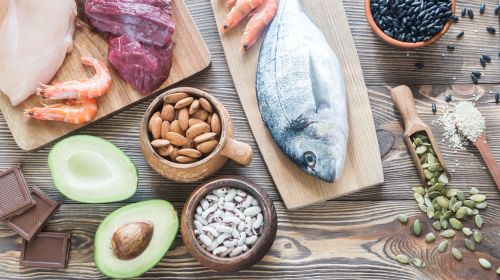When the temperatures on the thermometer drop and it gets gray and wet outside, the supply of nutrients like vitamin C and zinc is particularly important. Why it is better to rely on local vegetables instead of imported fruit and which foods contain so many nutrients.
- Winter vegetables such as cabbage are an ideal source of vitamins in the cold season.
- © iStock.com/AGfoto
In wet autumn and cold winter, the risk of catching a cold is particularly high – among other things because there is now more often an insufficient supply of defense-strengthening vitamins and minerals.
Preventing vitamin deficiencies – article content at a glance
Avoid vitamin loss in fruits and vegetables
Many vitamins are sensitive to heat, light and oxygen. They are often lost on long transport routes from distant countries and when fruit and vegetables are temporarily stored. Therefore, experts from the German Nutrition Society (DGE) and the Federation for Environment and Nature Conservation Germany (BUND) recommend using freshly harvested and local fruit and vegetables.
The extent to which the vitamin loss is due to storage depends on the particular vitamin and vegetable. Vitamin C, for example, is particularly sensitive; root vegetables are less susceptible than leaf vegetables. The vitamin-rich vegetables that are available here in winter include white, red, rose and kale as well as spinach and potatoes. When it comes to fruit, there are, for example, apples and pears as storage varieties.
If you use local varieties, you eat not only seasonally, but also regionally and thus contribute to climate protection because long transport routes are no longer necessary.
Cabbage as an ideal protection against vitamin deficiency
Despite its very large amount of nutrients, cabbage has few calories, but thanks to the high fiber and water content, it ensures long-lasting satiety. 100 grams of cabbage produce – depending on the variety – just between 15 and 40 calories.
-

From artichokes to zucchini, from apples to citrus fruit: we tell you what's in it and when the products are particularly fresh and healthy.
to overview
The different types of cabbage are bursting with vitamin C, iron, calcium, phosphorus and magnesium. Vitamin C plays one S.key function in many important tasks of the immune system: it supports the lymphocytes, a subgroup of white blood cells and a kind of protective force in our body. It also increases the serum concentration of immunoglobulins, special protein substances that are also important for our immune system. In combination with vitamin A, it strengthens the mucous membranes, which are the first barrier against pathogens.
Vitamin C frontrunner: kale
Calcium, phosphorus and magnesium help keep the bones healthyn at. This is also important for prevention, since solar radiation and thus the formation of vitamin D is much lower at this time of the year. The body needs vitamin D for the optimal absorption of calcium via the intestines into the bloodstream. For this reason, a combination of winter vegetables with fatty sea fish is a good idea, as it is an ideal source of vitamin D.
As a rule, vitamin C is very sensitive to heat – its content in fruits and vegetables decreases considerably when cooked. It is different with cabbage vegetables: they contain more vitamin C when cooked than when raw. Cabbage contains ascorbigen, a precursor to ascorbic acid, which is broken down during the cooking process and releases vitamin C. The front runner in terms of vitamin C is kale, followed by Brussels sprouts and then the Broccoli.
Exotics rich in vitamins complete the menu in winter
Those who do not want to limit the supply of vitamin-rich food in winter can fall back on imported goods. Citrus fruits are particularly popular during the cold season, as they are in season in the respective growing country. Orange, grapefruit, lemon and tangerine have around 50 milligrams of vitamin C in 100 grams of pulp. Drinking hot lemon is often recommended as a home remedy for colds.
For this, the juice of the lemon and a teaspoon of honey are mixed with a cup of hot water. The lemon provides vitamin C, the honey is said to have an anti-germ and anti-inflammatory effect. However, the hot water destroys some of the vitamin. Hence the recommendation: just heat the lemon juice slightly or drink freshly squeezed juice, if possible also with fresh mandarin and orange juice, mixed with water and separately drink a (herbal) tea with honey.
In winter more and more exotic fruits enrich the offer. Like citrus fruits and local fruits, they provide a lot of vitamin C and other valuable ingredients, but only few calories. The front runner for vitamin C is the acerola cherry, which has an average of 1,500 milligrams of vitamin C in 100 grams of pulp, followed by guava with 275 and papaya with 80 milligrams.
Prevent vitamin deficiencies through correct preparation
Like all vegetables, cabbage vegetables should be freshly prepared as possible. Red cabbage, white cabbage, Chinese cabbage and savoy cabbage can be kept in the refrigerator for up to two weeks, kale for five to ten days and Brussels sprouts for three to four days.
Vegetables should not be watered, but cleaned, washed, chopped up and processed immediately before preparation. If the vegetables cannot be eaten raw, stewing or steaming protects the heat-sensitive vitamins C, B1, B2 and B6. With pieces of fruit and vegetables for salads, a few sprinkles of lemon or vinegar reduce the vitamin breakdown by oxygen.
In winter, many people like to use frozen food as an alternative to fresh vegetables, which they have either frozen or simply bought ready-made. The nutritional value, taste and appearance of vegetables that are frozen without salt, fat, sauces or the like and stored correctly are, according to the DGE, almost equivalent to fresh goods.
The loss of vitamins can be significantly delayed by freezing. However, it cannot be completely prevented; it remains dependent on the temperature and the duration of storage. For example, the vitamin C content of green beans or peas decreases by around seven percent every day when stored between two and four degrees Celsius. If, on the other hand, it is stored at minus 18 degrees Celsius, almost one hundred percent of the vitamin C is retained after four months, and around 70 percent after twelve months.
If the vegetables themselves are frozen, the DGE recommends that most varieties be blanched briefly beforehand in order to reduce changes in color and vitamins. For purchased products, preference should be given to raw vegetables without ready-made sauces in order to save unnecessary calories. Storage is best in airtight containers, and thawing is best done quickly – for example in the microwave.
Seedlings and sprouts against vitamin deficiency
As an additional vitamin injection in winter, the DGE recommends seedlings or sprouts to supplement the food, i.e. tender young plants that have just broken through the seed coat or have already formed a thin stem. Such seedlings exist, for example, from the mongoose or soybean as well as from wheat. They are high in fiber and vitamins – especially C, B1, B2, E and niacin. While some germs are suitable for raw consumption, such as mung beans, wheat or rye, others should be briefly blanched beforehand, such as peas, soybeans or chickpeas.
Add zinc daily
In addition, you should ensure that you have a sufficient supply of zinc in autumn and winter: the trace element cannot be stored in our body and must therefore be supplied again every day. Zinc is involved in numerous processes in the organism. It not only strengthens the immune system, but is also involved in building cell growth and genetic material and accelerates wound healing.
Even many hormones require zinc for their various functions. Incidentally, zinc from animal foods is better absorbed by the body than from plant sources. High amounts of fat and calcium also hinder the absorption of zinc in the intestine.
It can sometimes make sense to cover minerals and vitamins with the help of dietary supplements. However, it is now known that vitamins in their natural form are best for the body to utilize.
The following dishes offer an optimal combination of zinc and vitamin C:
- Vegetable stew with meat
- Potato and vegetable casserole with meat or fish
- Cheese bread with paprika as a topping
- Omelet
- Pancakes with a vegetable or vegetable meat filling
- Fish with potatoes and broccoli
- Raw carrot with orange juice and pumpkin seeds
The best foods for the immune system
The following nutrients and foods are generally particularly valuable when it comes to strengthening the immune system:
Vitamin A is important for healthy mucous membranes and can prevent infections. Sweet potatoes, carrots, kale, spinach and red peppers are particularly rich in this vital substance.
Vitamin C has a positive effect on the production of immune-boosting antibodies. In addition to citrus fruits, which are still overrated as a supplier, vegetables such as paprika, fennel and broccoli bring a lot of vitamin C.
Vitamin E is a natural antioxidant that supports the immune system. Sunflower seeds, almonds, hazelnuts, peanuts, walnuts, sunflower and safflower oil.
Zinc could also improve the function of the immune system. However, the study situation on this trace element is contradictory. Zinc works for some people and not for others. So it's definitely worth a try. Lean beef, wheat germ, crabs, wheat bran, sunflower seeds, almonds, milk and tofu are particularly rich in zinc.
Protein is an important component of the immune system. Good sources of protein are not only fish and lean meat such as poultry, but also beans and peas, soy products, eggs and unsalted nuts and seeds such as sunflower and pumpkin seeds.
Too much of a good thing: Vitamin D overdose
TargetVideo






